
- Home
- News
- Analysis
- States
- Perspective
- Videos
- Education
- Entertainment
- Elections
- World Cup 2023
- Features
- Health
- Business
- Series
- Economy Series
- Earth Day
- Kashmir’s Frozen Turbulence
- India@75
- The legend of Ramjanmabhoomi
- Liberalisation@30
- How to tame a dragon
- Celebrating biodiversity
- Farm Matters
- 50 days of solitude
- Bringing Migrants Home
- Budget 2020
- Jharkhand Votes
- The Federal Investigates
- The Federal Impact
- Vanishing Sand
- Gandhi @ 150
- Andhra Today
- Field report
- Operation Gulmarg
- Pandemic @1 Mn in India
- The Federal Year-End
- The Zero Year
- Premium
- Science
- Brand studio
- Home
- NewsNews
- Analysis
- StatesStates
- PerspectivePerspective
- VideosVideos
- Entertainment
- ElectionsElections
- Sports
- Loading...
Sports - Features
- BusinessBusiness
- Premium
- Loading...
Premium
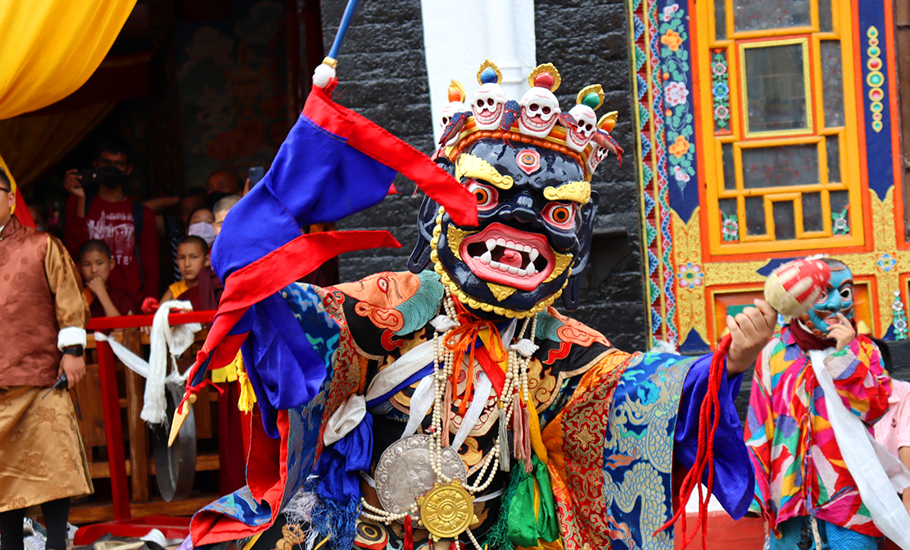
Why Sikkim celebrates a treaty 'inked' in blood centuries ago

Many moons ago, Mount Kanchenjunga was invoked as a witness to a treaty between two ethnic groups which expressed a desire to coexist as ‘blood brothers’ in Sikkim. Centuries have passed since then, changing the political landscape of the picturesque land, which became the 22nd state of the Indian Union after several twists and turns of events. But the vows that the ancestors of the...
Many moons ago, Mount Kanchenjunga was invoked as a witness to a treaty between two ethnic groups which expressed a desire to coexist as ‘blood brothers’ in Sikkim.
Centuries have passed since then, changing the political landscape of the picturesque land, which became the 22nd state of the Indian Union after several twists and turns of events. But the vows that the ancestors of the Lepchas and the Bhutias had taken—in blood, literally— have withstood the vagaries of time as the two communities devised a unique way to reaffirm the commitment year after year.
“The spirit of the treaty has been kept alive for centuries by the annual festival of Pang Lhabsol. A vibrant and colourful event, it is observed on the 15th day of the seventh month in the Tibetan Calendar [that is in August or September],” Nirmalya Banerjee, author of The Buddha and the Borders, tells The Federal.
This year Pang (meaning to witness) Lhabsol was held in different Buddhist monasteries across the hill state on September 10 with the usual fervour and gaiety. The celebrations in the state capital Gangtok were held on the impressive Tsuklakhang Palace lawns. The compound, resting on a mountain top at an altitude of 1,437 metre above sea level, houses the royal palace and the monastery.
The two-storey monastery built in Tibetan temple style of architecture is believed to be constructed in 1898 during the reign of Thutob Namgyal, the ninth king of the then Himalayan kingdom who ruled from 1860-1914. The sprawling lawn flanked by coniferous trees and flower gardens provides a breathtaking view of the snow-capped Kanchenjunga on a bright sunny day.
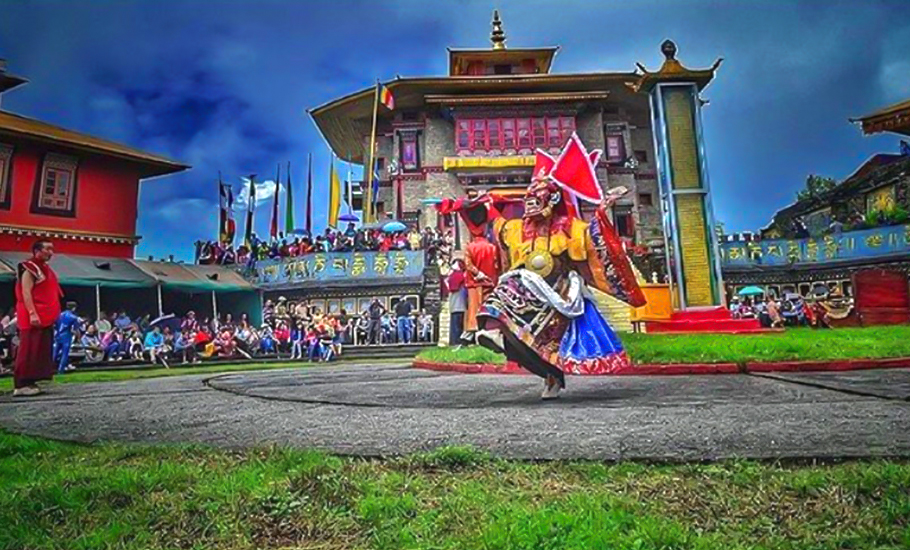
On the day of the festival, the entire place is filled with the sounds of gyaling (a traditional trumpet), drums, cymbals and chanting. The lamas and monks clad in maroon, the dance performers in their elaborate masks and vivid costumes and the cheerful onlookers and devotees gathered at the monastery altogether paint a colourful picture.
This year the festival fell on a cloudy Saturday morning. The sun played hide and seek, occasionally peeping out from behind the veil of clouds. But that did not dampen the spirit.
The compound was jam-packed with tourists and locals. There was no dearth of warmth and shine. The monks enthralled the gathering with their stunning Pangtoed Chham dance wearing red masks, representing Mount Kanchenjunga (considered the presiding deity of the Sikkimese people) and blue masks signifying Yeshe Gonpu, the Mahakala or the Lord of Wisdom.
The day’s celebrations started with an opening dance by a group of young monks while the devotees offered khadas (scarves) to the two guardian deities of Sikkim.
Organised by the Tsuklakhang Trust, the festival this year had the presence of royal princess Hope Leezum Namgyal and former Indian football captain Bhaichung Bhutia among others.
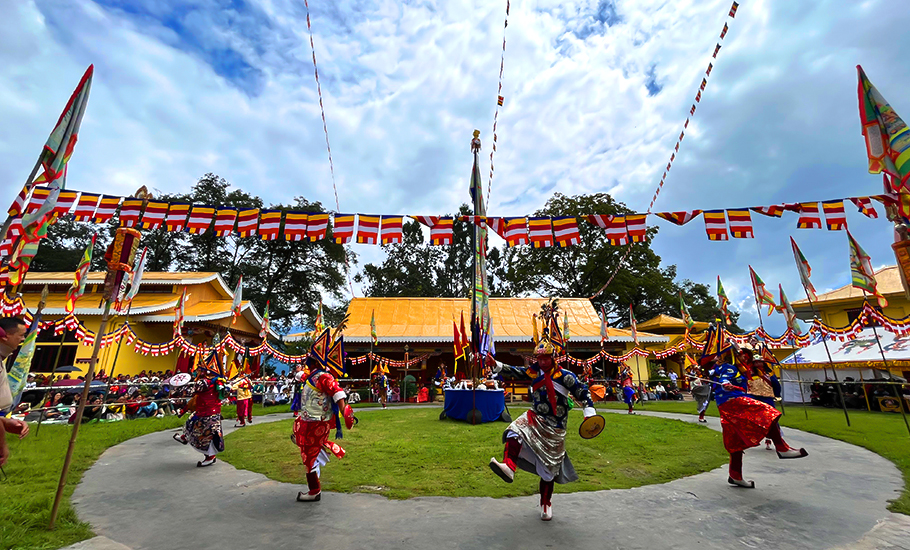
“Pang Lhabsol symbolises unity and brotherhood among the Sikkimese people, and historically, the day commemorates the treaty of brotherhood between the Lepcha and the Bhutia communities at Kabi Lungchok,” Sikkim chief minister Prem Singh Tamang (PS Golay) said in a social media post about the occasion.
Writing about the festival in his book, The Buddha and the Borders, Banerjee says ‘Mount Khangchendzonga’ was a witness to the mythical ceremony that had supposedly taken place hundreds of years ago. “Like every myth, this event too has an element of historical authenticity in it. Such a treaty was indeed signed between the two ethnic groups more than 600 years ago,” Banerjee writes in the book that delves into the socio-cultural and political aspects of the eastern Himalayas comprising Darjeeling Hills, Sikkim, Arunachal Pradesh, and eastern Bhutan.
Indeed, the government of Sikkim, scholars, researchers and common people widely recognise the treaty as a historical event, and not merely a folktale. They consider it as a watershed event that shaped Sikkim’s ethno-culture and communal bonding.
“This friendship was cemented by a ceremony at which several animals, both domestic and wild, were sacrificed and all the local deities invoked to bear witness to this solemn contact of friendship, binding the Lepchas and the Bhutias in an inseparable bond. They sat together on the raw hides of the animals, entwined the entrails around their persons, and put their feet together in a vessel filled with blood; thus swearing the blood troth to each other,” writes Maharaja Thutop Namgyal’s in The Royal History of Sikkim.
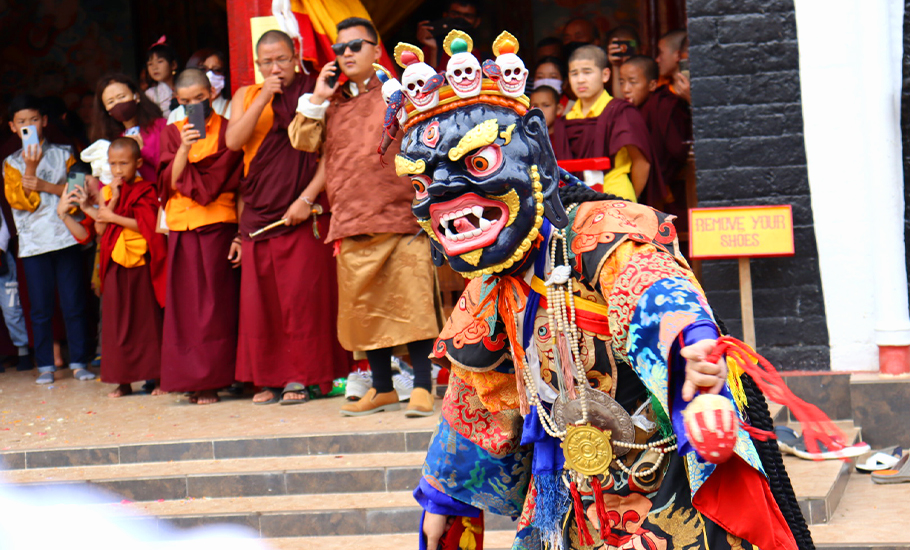
Most scholars and writers were unanimous in their findings that the event took place in the 13th century at Kabi Lungchok (also spelled Kabi Longtsok), some 17 kilometres north of the state capital Gangtok.
Since the inking of the treaty was not yet in practice, nine stones were erected at the time of the agreement. These monoliths still exist in Kabi Lungchok, which is now a popular tourist destination. The literal meaning of the Lepcha phrase ‘Kabi Lungchok’ is “stone erected by our blood”.
The Sikkim government a few years back constructed statues of three personalities involved in the treaty — Lepcha chief Thekong Tek, his wife Nyookoong Ngaal and Bhot King, Khye Bumsa representing the Bhutias.
The two entered into the agreement not to resolve any dispute between the two communities. According to some accounts, the only thing which motivated the Lepcha chief to enter into the agreement was his apprehension that the third son of Bumsa was a lucky one and possessed the signs of becoming the ruler of the region and the Lepchas.
In order to avoid any confrontation in the future, Thikong Tek attempted to protect the future of the Lepchas by inking the treaty well in advance, they say.
Lepchas are the original ethnic community of Sikkim whereas the Bhutias migrated from Tibet. The early Bhutia settlers in the region were those who came with Bumsa in the 13th century. Thereafter, there was a constant flow of migration due to conflicts between two sects of Buddhism in Tibet called Red hat and Yellow Hat.
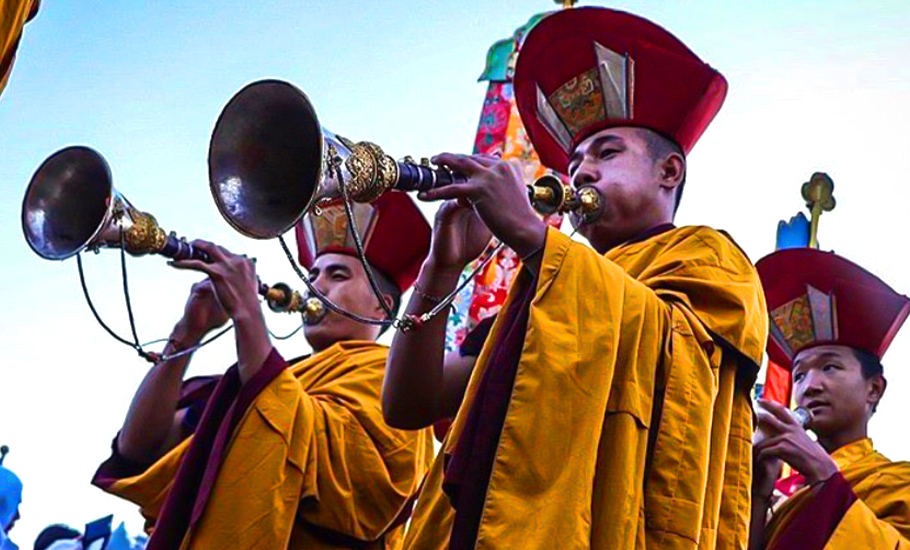
In today’s Sikkim, Lepchas constitute 7·94 per cent of the population and Bhutias 8.57 per cent. Both these groups are listed as Scheduled Tribes by the government of India. After the implementation of the recommendations of the Delimitation Commission, in 2002, 12 (out of 32) seats were reserved for this group in the Sikkim Legislative Assembly to protect their rights.
Notwithstanding the migration and the intermingling of different cultures, today’s Sikkim reflects a quietude and magnanimity much like the mighty Kanchenjunga. And Pang Lhabsol is a celebration of the same magnanimity and fortitude.

